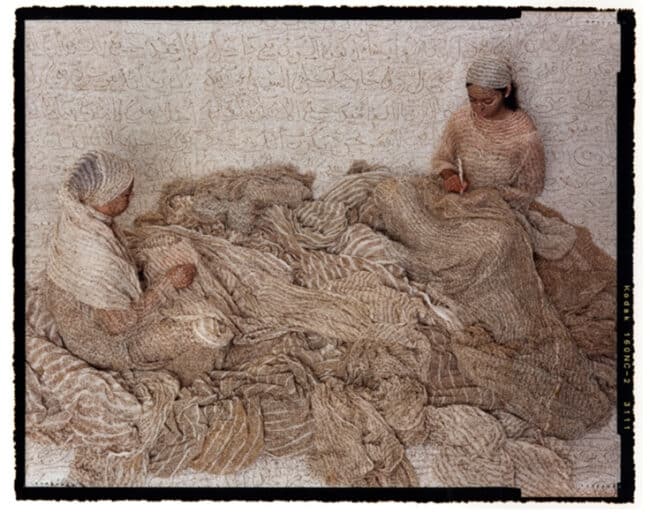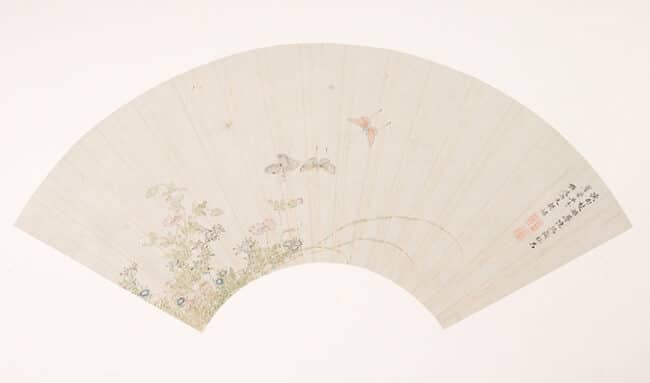You asked, we answered! The Harn Museum kindly asked visitors to submit questions about its current Cuban art exhibition. The curators behind Under the Spell of the Palm Tree: The Rice Collection of Cuban Art have received your questions and are ready to continue the conversation. The exhibition features artworks by generations of creatives with strong ties to Cuba. Chief Curator and Curator of Modern Art Dulce Román, in collaboration with Guest Curators Gabriela Azcuy and David Horta, provide expert insights to your questions below:
 image: Sandra Ramos, Bajo el hechizo de la palma (Under the Spell of the Palm Tree), 1993, Collection of Susie and Mitchell Rice
image: Sandra Ramos, Bajo el hechizo de la palma (Under the Spell of the Palm Tree), 1993, Collection of Susie and Mitchell Rice
How many of the artists in the Rice Collection are women?
Gaby Azcuy:
In the Rice Collection, there are a total of 76 Cuban artists represented. Among this group, 9 of these artists are women.
Do Cuban women have much of a voice in the art world?
Gaby Azcuy:
Today, yes. Women have always been a part of Cuban art history, but for many decades, it was a world dominated by men in terms of numbers and participation. After the establishment of the Instituto Superior de Arte in Havana in 1976 (the first university for the arts) and all the changes that the 1980s brought to the visual arts, the 1990s marked the first decade when the number of women artists grew similarly to men. Today, in some cases, there are even more women than men in art classes. So, in contemporary Cuban art, women play a significant role and have a strong presence. Some of the most important artists from the 1990s who emerged during this new era for Cuban arts are part of the exhibition: Tania Bruguera, Sandra Ramos, and Belkis Ayón.
What was it like collaborating with each other to organize Under the Spell?
Gaby Azcuy:
David and I have collaborated for several years, so we are familiar with our working dynamics. In this case, all the work was done remotely, with me in Spain and the United States, and him in Cuba. The first time we met in person during the entire exhibition preparation was at the Harn Museum for the Collectors’ Talk with Susie and Mitchell Rice on October 21st.
The first year of work was challenging due to the lack of connectivity for David in Pinar del Río, Cuba. However, we organized the different phases of preparing the exhibition and worked gradually. Once we jointly developed the curatorial concept, selected the artworks, and completed other exhibition phases, David played more of a consulting role, primarily due to geographical circumstances. We are very proud of the work we have done together.
What was the biggest challenge in organizing the exhibition?
Gaby Azcuy:
When working with a living collection that is still evolving and developing, reaching a final selection is complex. There were works that we acquired in December 2022 that we considered crucial to include, so we had to adjust the selection and exhibition design. Another significant challenge was ensuring that the selection of works represented all the voices within the Rice family, as there are two generations of collectors.
What is the most important take-away from Under the Spell?
Gaby Azcuy:
It is a deep survey of the 10-year development of the Rice Collection. This exhibition allows us to analyze ten years of work and the current status of the collection, as well as to outline future development directions. Additionally, it is a clear demonstration of the collection’s social vocation.
Which artwork was the most challenging to install and why?
Gaby Azcuy:
The most challenging artwork to install was Fragmento arrancado (Torn Fragment) by Manuel Mendive. It is a highly complex sculpture with a sturdy metal base and a polyform shape made of brass, which is covered with canvas. The canvas itself is a mixed media piece that includes small objects. The total weight is approximately 400 lbs., making it delicate to touch due to the painted canvas and the softness of the brass. Additionally, lifting it by the base is challenging because of its height. Therefore, the installation required time, patience, and meticulous handling. The museum crew did an outstanding job with its installation.
Q: What is the significance behind the exhibition’s title and the works on display?
David Horta:
The title of the exhibition comes from one of the works on display, the etching Bajo el hechizo de la palma (Under the Spell of the Palm Tree) by Cuban artist Sandra Ramos. The symbolism of both the title and the image in question transcends the specific meaning of individual works towards a kind of shared insight. The image of a royal palm tree (the national tree of Cuba) standing tall, solitary and proud against the winds, under the scorching sun and the threat of bolts of lightning and seasonal hurricanes, in the middle of a valley fenced in by sturdy mountains, is perhaps the most immediately recognizable identity symbol of the Cuban nation, or at least of how Cubans have perceived themselves, as well as their island nation’s destiny throughout the centuries. Such pride and resilience in the search for a sense of self and belonging, and such a daily struggle for independence, self-expression and survival under the most difficult circumstances, without losing the joy of beauty or the lucidity and clarity of purpose in the way, has characterized Cuban art since it embraced modernity in the late 1920s to this very day. The “spell” stands for how all this intrigued, then fascinated and finally engaged the Rices’ in starting a Cuban art collection and in supporting Cuban artists in the island and the diaspora, around a decade ago.
Q: Why is spirituality a major theme present in this exhibition or in Cuban art in general?
David Horta:
Despite six decades of politics and indoctrination based on the premises of the most orthodox Marxist ideological premises, the Cuban political status quo was never able to totally repress and erase the spirituality, and more specifically the religiosity of the Cuban people. The truth is that Cuba is a country with a very rich spiritual tradition. A very significant part of modern and contemporary Cuban art reflects to a greater or lesser extent the transcendent role that this spirituality has played in the daily life of Cubans, from the merely symbolic level to actual shared social practices and values and their repercussions on the ideological or political level, as evidenced in works as dissimilar as those by Wifredo Lam, Lázaro Saavedra, Diago or Belkis Ayón and Ángel Ramírez, on display at Under the Spell of the Palm Tree.
Under the Spell of the Palm Tree: The Rice Collection of Cuban Art is on view through January 7, 2024.
To learn more about the exhibition, get your copy of the Under the Spell of the Palm Tree catalog in the Harn Museum Store.



